Contact Us : 800.874.5346 International: +1 352.375.0772
Passing the CPA Exam is a major milestone on the way to becoming a CPA – and Gleim knows how to get you there better than anyone else. The original self-study CPA Exam review provider, we’ve helped accountants pass over 1 million CPA exams. Here you’ll find key resources to help you on your journey.
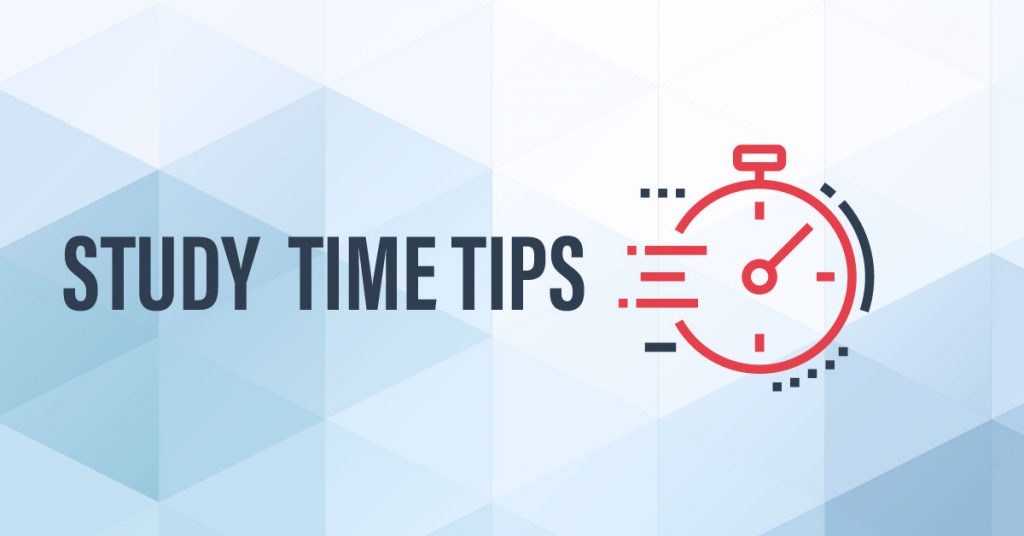
Getting The Most From Your Study Time
Tips to help you study whether still in school or working full time.
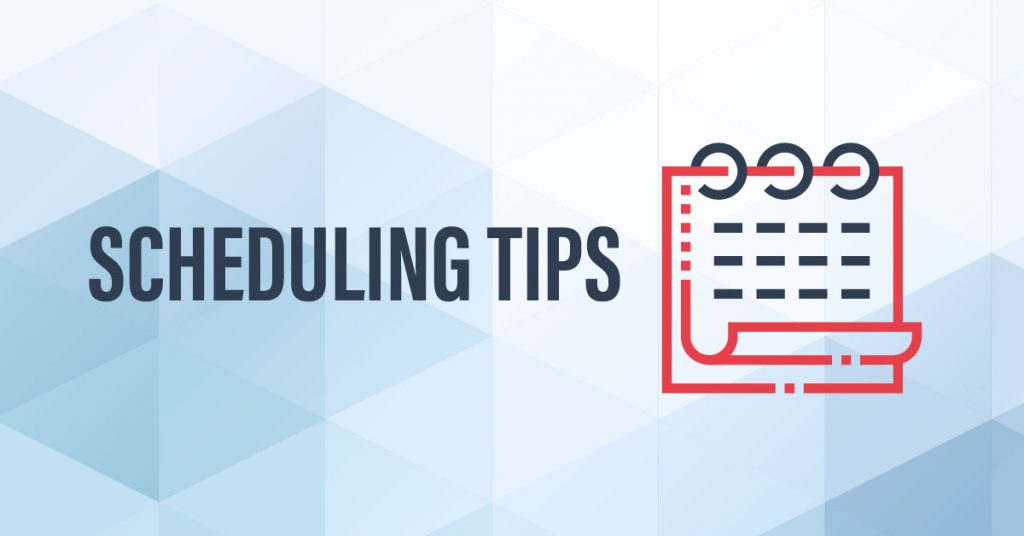
Scheduling The CPA Exam For Success
Plan your test timing with a strategy to find your ideal schedule.
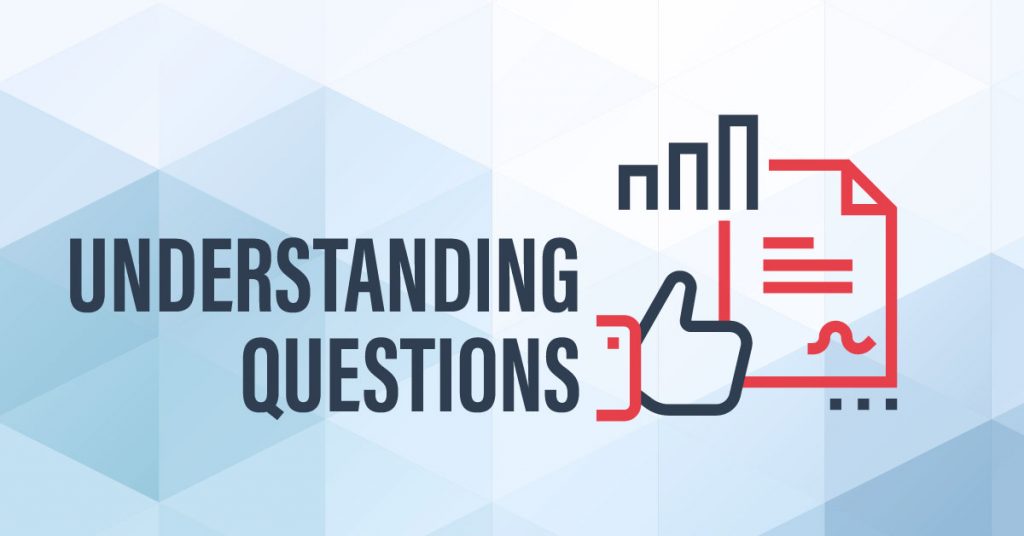
Understanding Questions On The CPA Exam
Little-known tips that can help you better grasp each question.
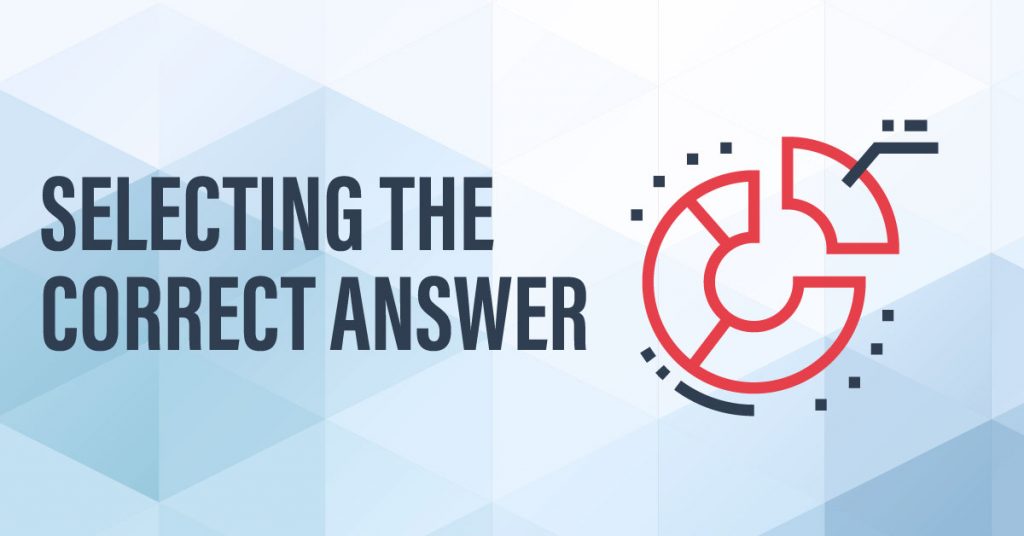
Increasing Your Odds Of Selecting The Best Answer
Tips to narrow down the right CPA Exam answer more often.
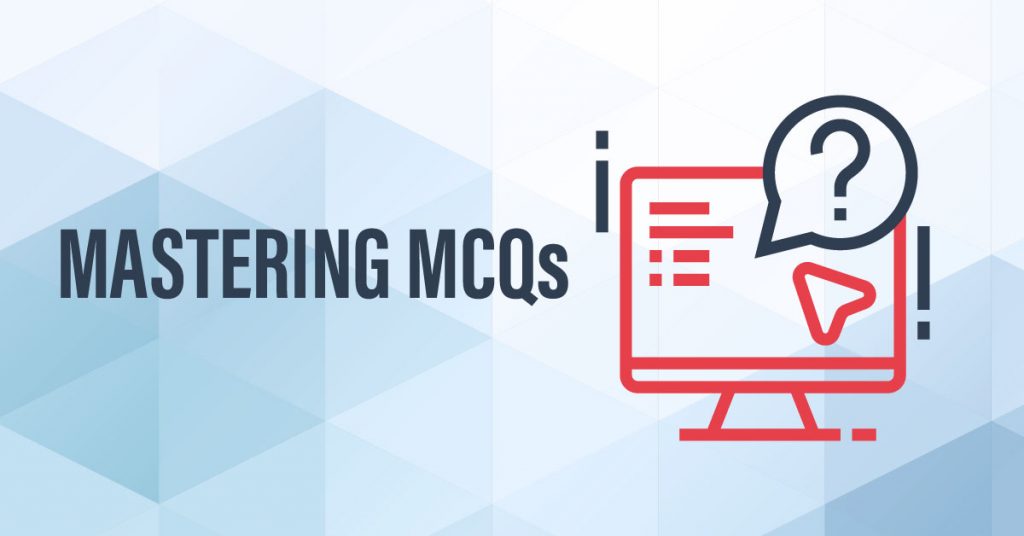
Mastering Multiple-Choice Questions On The CPA Exam
Wise advice to maximize your scoring potential on MCQs.
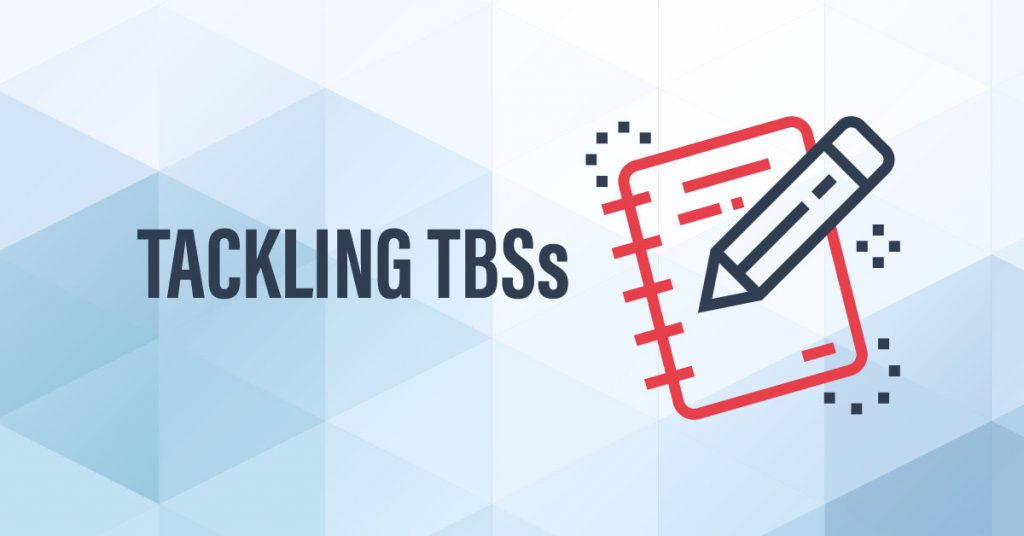
Beating Task-Based Simulations On The CPA Exam
Our guidance on how to tackle TBSs and improve your score.
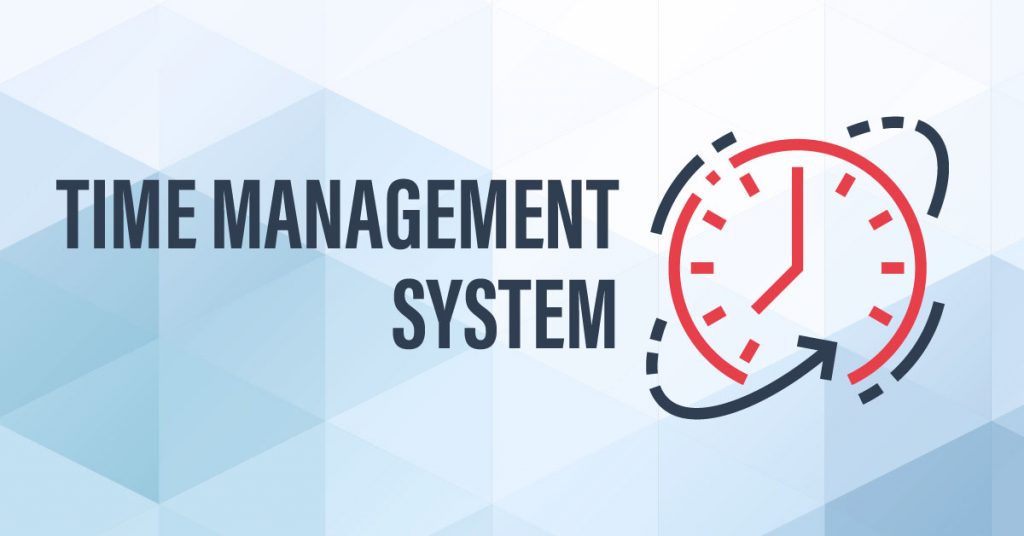
Using A CPA Exam Time Management System
Learn strategies for managing your CPA Exam time. It’s important!
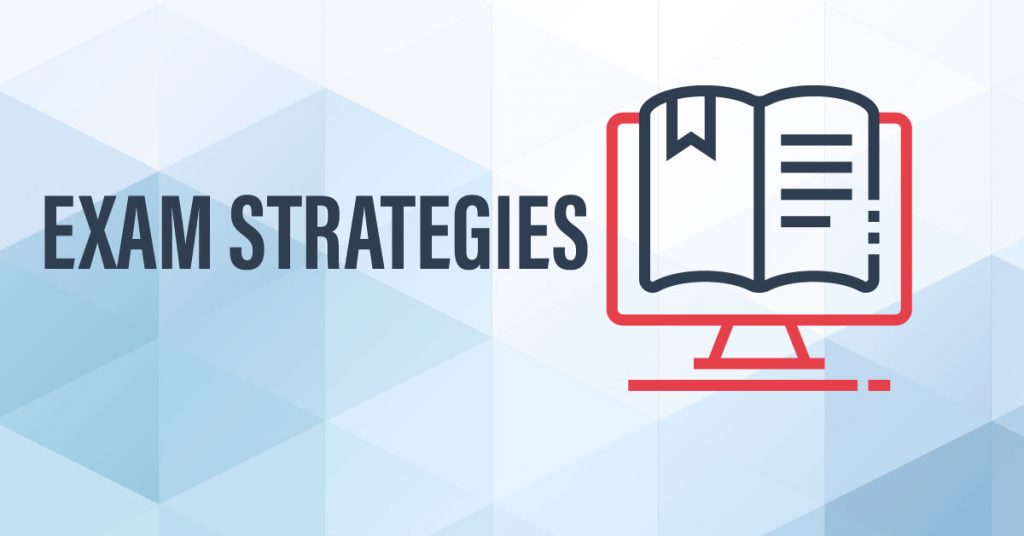
Bonus Tips: More CPA Exam Strategies That Will Serve You Well
A few more things you can do to position yourself for success.

While you’re studying, make sure you follow these tips to work toward passing the CPA Exam. It’s one of the hardest exams in the world. Whether you’re still in school or years have passed since you’ve had to study, you’ll do well to heed this advice.
Your CPA study plan needs to take into account life demands. The most common study plan lets you pass the CPA Exam in six months to a year, studying a couple hours a day. That said, you may need more time—or you may need less. We’ve known candidates who’ve passed the CPA Exam in a few short months as well as some who have needed years. The important thing is to know what YOU need, and not what someone else has done.
If you’re in study mode already…
Planning to pass the CPA Exam in six months may be doable for you. You could take one section at the beginning and another section near the end of two consecutive testing windows, budgeting approximately six to seven weeks of study per section (e.g., exam dates of January 2, February 14, April 1, and May 15). You might want to study 22-26 hours per week—that’s about 3-3.5 hours of study a day—to stick to this schedule.
| 6-Month Study Plan | |||
|---|---|---|---|
| Time Line | Weeks per Section | Hours per Week | Hours per Day |
| 6 months | 6-7 | 22-26 | 3-3 ½ |
If you’ve been out of school a while…
the CPA Exam in one year can work for candidates who’ve been out of school for a while and need a refresher on many topics. If you’re considering a study plan to pass in one year, aim to pass one section per CPA testing window.
This gives you 10-12 weeks to prepare for each section, studying 13-15 hours a week (1.5-2 hours per day).
| 1 Year Study Plan | |||
|---|---|---|---|
| Time Line | Weeks per Section | Hours per Week | Hours per Day |
| 1 year | 10-12 | 13-15 | 1 ½-2 |
How to pass the CPA Exam fast
If you don’t have many obligations and can study eight hours a day, you might be able to pass the CPA Exam section fast.
A study plan to pass the CPA Exam fast might look like this:
Week 1: Watch lectures
Week 2: Practice exams
Week 3: Final review
But this won’t be practical for the vast majority of folks. We don’t recommend cramming. One of the best ways to make sure you pass the CPA Exam fast is to pass the first time. Don’t set an unrealistic study plan or you’ll get discouraged.
The other part of your study plan will be a list of the topics you will cover. The Gleim CPA Review system conveniently organizes topics into study units. You can use the outline of topics to plan your study schedule.
Commit 100% of your concentration during study times. Clear away all distractions like the TV, find a quiet place, listen only to instrumental music, and turn your phone on silent. (Better yet, put your phone across the room. Research shows your learning is impaired when your phone is with you.)
Don’t try to study and multitask—you’ll be wasting your time. The only exception is using study-on-the-go options like listening to audio lectures when you’re driving, exercising, traveling, cleaning, etc.
Carry materials with you in case you have downtime. It’s helpful to have in mind what you need to study or do next before you head out the door, in case you wind up with a few minutes to spare. You can pull out your book, pop on your headphones, or call up CPA Exam course materials on your phone.
The purpose of a diagnostic quiz is to quickly drill down to what you already know and what you don’t. Completing a diagnostic quiz before diving into each study unit of your CPA review lets you focus your study time most effectively.
You can successfully determine your weak areas for a study unit with a diagnostic quiz in as few as 20 questions.
THE ![]() SOLUTION
SOLUTION
Short diagnostic quizzes are a core component of the Gleim approach. Here’s why:
Keeping the quizzes short and specific to each study unit lets you separate your work into manageable sessions.
Some courses require a gigantic quiz of 400+ questions, which addresses all the exam content at once. This type of “quiz” could take hours to finish and will delay your chance to jump right in and begin studying.
Diagnostic quizzes that you can complete in one sitting are less draining and let you dive into the right material as soon as you identify it.
Once you know your weak areas, you can begin to build them up by going back to the basics. You don’t need to keep quizzing yourself just yet. You need to learn what you don’t know so you can recall it when you need to.
Focusing on your weak areas is the best way to study for the CPA Exam because you’re only studying what you need to study for as long as you need to study it.
If you study everything, you’re studying more than you need to and wasting a lot of time. You’re also risking burnout, which may leave you too mentally exhausted to pass the CPA Exam once you actually sit for it.
THE ![]() SOLUTION
SOLUTION
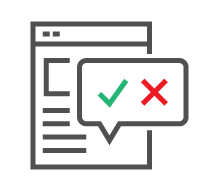 Best CPA review for focusing on your weak areas: Gleim CPA Review
Best CPA review for focusing on your weak areas: Gleim CPA Review
Focusing on your weak areas when you study is the best way to pass the CPA Exam. It is also a proven study strategy at the foundation of the Gleim learning system. In 40+ years, Gleim has helped candidates pass more than 1 million CPA exams by guiding them through these steps, and we’ve designed our SmartAdapt™ technology to take that guidance to the next level.
Our adaptive CPA course creates a study plan tailored specifically to your learning needs. It constantly adjusts to your performance so you’ll be totally prepared for passing the CPA Exam.
Writing down material helps it stick in your memory.
To pass the CPA Exam, you must be able to understand, remember, analyze, evaluate, and apply all the content in the CPA Exam blueprints. You can’t get away with simply memorizing the definitions and formulas. You must have a solid grasp of the concepts and be able to use them.
You can be sure you really understand the material if you can explain it in your own words rather than simply reciting it. (This learning technique is called self-explanation.)
Taking quizzes is a form of practice testing, and practice testing is one of the top study methods. Practice testing can dramatically improve your recall and works for both simple questions (like multiple-choice questions) and more complex questions (like task-based simulations). Practice testing also requires less time than many other study methods, like rereading or self-explanation.
Research supports this. One study published in Psychological Science found that taking a practice test immediately after reading material resulted in a 52% increase in long-term retention.
You should take plenty of quizzes throughout your CPA review to ensure you really are improving your weak areas and that what you’re learning is entering your long-term memory.
Memorizing the wording of practice questions is ineffective for a couple reasons:
So, direct your mental effort toward understanding the topics the practice questions address. You won’t acquire the necessary knowledge unless you concentrate on the exam topics tested instead of memorizing questions.
Study using lots of practice questions. The Gleim test bank includes thousands of questions that have been provided by the AICPA and used on real-life CPA Exams.
Learning how the AICPA presents their questions and tests different skills will improve your question-reading skills for the CPA Exam. Determining what a question is trying to test will help you pick the best answer.
Only perfect practice makes perfect. That means practicing in as close to the real CPA exam environment as you can. This is super important because with just over a minute to answer each multiple-choice question, the last thing you want is to waste time on exam day figuring out how to operate something you could have prepared for.
THE ![]() SOLUTION
SOLUTION
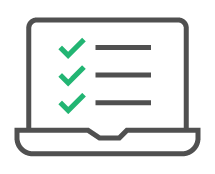 Lucky for you, Gleim has set up its practice test environment to look and function exactly the same as the real CPA Exam
Lucky for you, Gleim has set up its practice test environment to look and function exactly the same as the real CPA Exam
We’ve made a point of doing this right down to the screens you see at the start; the tools you’ll use like timers, spreadsheets, and calculators; how you’ll access the authoritative literature—everything.
We are confident that no other review provider even comes close to matching the test environment as well as we do.
If you’re studying accounting and know you’ll probably want to take the CPA Exam at some point in your career, consider starting while you’re still in school. You’re already in study mode and the CPA Exam material overlaps with your accounting courses. The longer you wait to take the CPA Exam after you’re out of school, the harder it can be to come back to the material you’re not using directly in your job (and few jobs will cover all areas on the exam).
It can be hard to figure out which CPA review course is right for you. Researching course options online gets confusing pretty fast. But there are some things you can do to help make this decision. First, figure out your study style. Then, compare apples to apples. Learn more in our guide Choosing the Right CPA Review Course.
Once you’ve picked your CPA review provider, then lean on the components of the course that work best for you. A review course that offers a variety of CPA self-study materials will help you find the most effective way for you to grasp the information and get it to stick.
Using Gleim, you can begin with content outlines that let you learn as fast as you can read—or go straight to CPA video lectures that offer more thorough explanations, real-world examples, and a fresh perspective on difficult concepts.
The professor-led video lectures of Gleim Premium CPA Review divide each topic into several short videos so that you can move at your own pace. For even more learning flexibility, you can hone your weak areas while walking or doing chores with audio lectures.
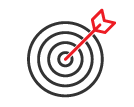

Yes, how you schedule the CPA exam can impact your likelihood of passing! Consider these strategies when you plan your testing schedule.
The best scheduling strategy is to stagger each exam section. Give yourself equal time between each testing appointment.
For example, if you want to start preparing for the CPA exam in February and complete the exam by August, you would schedule your exam sections as follows: one in early April, one in mid-May, one in early July, and one at the end of August. You would have about six weeks to prepare for each section individually.
Many like to schedule one section per testing window in a year.
Every candidate’s experience will be different. We’ve seen candidates pass with as little as 80 hours of study time per section, and we’ve seen others need 180. The study time you need can be influenced by factors such as how familiar you are with the material, how long it’s been since you earned your degree, and how long ago you last studied for a serious exam.
The CPA Exam goes through changes regularly. When there are bigger changes, it can create uncertainty. This makes it slightly riskier to take the CPA Exam because there will be issues to figure out that could affect scoring.
That said, Gleim always updates its CPA Review course to match the latest CPA Exam content, so you’ll be covered in your study materials.

It’s a no-brainer—you need to make sure you understand the CPA questions. But it can be harder than you might think! These strategies are absolutely critical to passing the CPA Exam.
What’s the stem, you ask? It’s the part of the question that contains the details of the question. It will contain the facts and figures you need, but it may also include some information you don’t.
You can try reading the last sentence of the question stem first, as this can often point you toward which parts of the stem are most important.
Don’t let the answers influence how you interpret the question!
Focusing on what’s required helps you:
Be careful! The requirement may be an exception that features negative words such as “not”, “never”, “always”, “least likely”, or “most likely.”

Passing the CPA Exam may require strategies you’ve never have had to call on before in your studies. Here we’ll equip you with some strategies to increase your chances of selecting the correct answer to exam questions.
Only one answer option is the best choice, though more than one could be partially correct. If you formulate the answer first, you can quickly zero in on the right answer and discard the others.
Even if an answer choice appears to be correct, you still need to read the remaining answer choices! Each choice requires consideration because you are looking for the best answer, and more than one may be technically correct.
Some MCQ answer choices are distractors that are meant to appear correct. In computational MCQs, the distractors are carefully calculated to take advantage of common mistakes. Double-check your computations if you have time.
Try treating each option like a true or false question and comparing it to the answer you believe is correct. This technique can help you boil your choices down to black and white.
Apply the different answer choices to real life and consider the consequences of each potential action. A CPA is responsible to guide others down the most advantageous path, so start fine-tuning your judgment now.
Your score is based on the number of correct responses. You will not be penalized for answering incorrectly, so you should never leave a question blank.
Stay within your time budget and don’t get caught up in trying to figure out a question.
You have a couple things to do when you’re unsure of the best answer.
How to improve your odds with educated guessing
If you come to a CPA Exam multiple choice question that has you stumped, follow these steps for making an educated guess. You have a 25% chance of answering correctly by guessing blindly, but you can improve your odds.
How to make an educated guess:
Step 1: Rule out answers you think are incorrect right away. For many MCQs, you can eliminate two answer choices right off the bat.
Step 2: Speculate what the AICPA is looking for and/or why the question is being asked.
Step 3: Of the two remaining, select the best answer.
Step 4: If they are equally appealing answers, remember that your first guess is usually the most intuitive.
When you eliminate the two most wrong answers first, you’ll have better odds when you make your “educated guess” between the two remaining.
When all else fails, go with your first instinct. When you don’t know what the correct answer is, your first instinct is usually the best guess. Don’t waste time flipping back and forth between your options.
Don’t jump around or you may miss questions. Just stay on track and plow through the questions in order.
Pretest questions don’t count toward your score. The AICPA always includes some questions they are considering using on future CPA Exams. This lets them collect data to gauge whether it’s a good question to use. Because these questions are untested (you’re the guinea pig here!), they may be more difficult or throw some people off.
The trouble is, there’s no way to tell for sure if it’s a real question or a pretest question. Don’t allow an odd question to throw you off!
Do not click the Submit Testlet button until you have looked at the question status list at the bottom of each MCQ screen.

No matter which CPA Exam section you’re taking, you need to be prepared for CPA Exam multiple-choice questions (MCQs). The CPA Exam contains five or six dozen MCQs per section.
While you’ve encountered multiple-choice questions before, you’ve probably never seen any like those on the CPA Exam. You’ll have to adjust your thinking and your study strategy if you have your sights set on passing the CPA Exam.
You should practice MCQs A LOT. Get hold of the best CPA Exam test bank on the market and apply these study tips as you practice. On test day, you’ll need a specific strategy to handle MCQs, so your practice should be preparing you for that.
To maximize your scoring potential for the MCQs in each CPA Exam section, use these tips.
The top 8 mistakes on CPA Exam MCQs
When a candidate misses a question, it’s usually because of one of these common mistakes. Make sure you don’t make these mistakes, too.
While your CPA review course can introduce you to the format and feel of the CPA multiple-choice questions, no one can predict the exact MCQs you will receive on the CPA Exam. It’s a waste of time to try to memorize the wording. Instead, focus your effort on learning the concepts well.
When you look at your answer options for a CPA multiple-choice question, several of the options may seem correct. The CPA Exam is an intensive test that aims to fully assess your accounting knowledge, so it may very well be that more than one of the answer options is viable for the situation.
However, only one of the answers is the best answer, and that is the one you need to select. A CPA should only choose the course of action that is the most advantageous to the client or company—passing the CPA Exam shows that you can discern this.
After you complete an MCQ quiz, review the answer explanations for the questions you missed so you can discover where you went wrong.
THE ![]() SOLUTION
SOLUTION
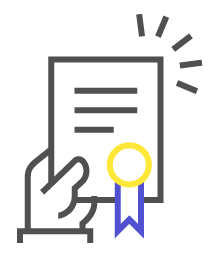 Struggling? See how Jonathan finally passed the CPA Exam…
Struggling? See how Jonathan finally passed the CPA Exam…
“I would not be a CPA today if it were not for the professor that introduced me to Gleim when I was ready to lose all hope of becoming a CPA.
After numerous attempts at the exams spanning over 6 years, and spending thousands of dollars on exam fees and study courses, Gleim made the pivotal difference that was necessary for me to pass the CPA exams. I spent countless nights highlighting pages on a book, but not really understanding what I was highlighting. Gleim doesn’t take a coloring book approach to studying.
You don’t learn by highlighting words on a page, rather, Gleim gives you the no-nonsense materials you need and forces you to learn from mistakes on multiple-choice questions. All the questions come with detailed explanations for the right answers and why wrong answers are wrong, which is truthfully what helped the most. I would encourage anyone looking for CPA Exam study materials to look no further than the Gleim Review System”.
– Successful CPA Exam candidate Jonathan Morera (see more customer stories)
You can also learn from reviewing answer explanations for questions you get right.
This lets you confirm that the answer was correct for the reasons you thought. The answer explanation may point out a new way to think about the topic that builds up your understanding. This all helps you retain your knowledge and boost your learning.
To build good habits for answering CPA Exam multiple-choice questions, limit the time to complete a 20-question practice quiz to 30 minutes. This will help you prepare to complete exam testlets of 30 CPA multiple-choice questions in 45 minutes, which is what you’ll get on exam day.
In your first pass through a quiz, you should answer every question. Spend just over a minute per MCQ max. The idea is that you can use the time remaining to review questions you were unsure about.
Consistent practice is so important, and short MCQ quizzes are a great way to work in study time that packs a powerful punch.
Even during trips, holidays, and vacations when you might not have time for an entire study session, working through daily practice MCQ quizzes will help keep your mind in study mode.
You can access the Gleim CPA test bankfrom your phone or tablet, making daily practice totally doable.
After taking practice MCQ quizzes for weeks and weeks before sitting for a CPA Exam section, you will be very prepared. However, you may encounter some MCQs that rattle your confidence.
Don’t let that happen! If you do, you may lose your focus and things can go downhill from there.
Breathe, relax, and remember what you know.
Your CPA Exam training will come through if you stay cool and trust your instincts. You can establish instincts by studying with the best test bank of CPA Exam multiple-choice questions available. The Gleim Mega Test Bank is the largest and most realistic CPA Exam test bank on the market, so learn more about how it can prepare you for MCQs and TBSs! Sample our test bank with these free CPA Exam questions today.

You will encounter task-based simulations (TBSs) on every section of the CPA Exam. A task-based simulation is a CPA Exam question type that requires you to complete four to eight tasks using the information provided. They can be tough to wrangle. But no worries, Gleim has you covered. With a powerful practice bank of more than 1,300 TBSs—twice as many as any other provider—we make sure you’re prepared! Here’s our guidance on how to tackle TBSs.
Each section of the CPA Exam contains testlets of task-based simulations (TBSs).
The number of TBS testlets as well as the number of TBSs within each testlet are the same for each exam section except BEC.
Number of Task-Based Simulations on the CPA Exam |
|||
|---|---|---|---|
| AUD | BEC | FAR | REG |
| 8 Total TBSs | 4 Total TBSs | 8 Total TBSs | 8 Total TBSs |
| Testlet 3: 2 TBSs | Testlet 3: 2 TBSs | Testlet 3: 2 TBSs | Testlet 3: 2 TBSs |
| Testlet 4: 3 TBSs | Testlet 4: 2 TBSs | Testlet 4: 3 TBSs | Testlet 4: 3 TBSs |
| Testlet 5: 3 TBSs | Testlet 5: 3 WCs | Testlet 5: 3 TBSs | Testlet 5: 3 TBSs |
Knowing how to work through the simulations is key, so prepare to maximize your TBS testlet scores with the following suggestions.
The CPA Exam does its best to present situations you would encounter as a CPA and then evaluate you on your response. One of the ways it simulates real-world scenarios is by giving you questions with information and data that you have to analyze. These are called constructive response because you need to build your answer using several things at your disposal: your application-level cognitive skills, content knowledge, and authentic real-world inputs provided like charts, graphs, and documents.
Task-based simulations are constructive response questions with information presented either within the question or through exhibits that look like documents or communications you’d have in real life as a CPA.
To answer a TBS, you may need to respond by:
In the AUD, FAR, and REG exam sections, you will also have to complete a Research task, which requires you to research the relevant authoritative literature and cite the appropriate guidance as indicated. You will not have to complete a Research task in BEC.
Since you will be able to access the authoritative literature during the exam, you don’t need to know it all by heart. However, you should be familiar enough that you can navigate to and interpret these items quickly when you need to:
For FAR:
For REG:
For AUD:
You should get used to how you’ll access authoritative literature on the CPA Exam. The Gleim CPA Review course provides access to the authoritative literature in the same way you will use it on test day. This includes the search function.
The AICPA also provides free access to AICPA Professional Standards, FASB Original Pronouncements, and FASB Accounting Standards Codification for six months when you schedule your exam. However, this access does not mirror how you will access it on the exam.
THE ![]() SOLUTION
SOLUTION
![]()
We match the real CPA Exam experience more realistically than any other provider—in every way. You can see for yourself! Try the Gleim CPA product demo today.
Passing the CPA Exam is just one of the CPA requirements. Earning about two years of experience in public accounting is another requirement. You really can use your accounting experience to help you pass the CPA Exam, if you’ve already been working.
The projects you accomplish on the job can expand your insight into the TBSs you must complete on the exam. As you work through practice TBSs like Document Review Simulations, recall times in which you performed the tasks the TBSs expect you to do, such as reviewing and revising an audit request list or analyzing tax depreciation worksheets in order to correct a letter to a controller.
Additionally, think about your interactions with practice TBSs when you receive new project assignments at work, as you may find that the process of taking on the real-world task will help you correct your common TBS mistakes and refine your approach to this type of exam question.
But remember, using your work experience to understand CPA Exam content works well in some instances, but not every instance. The CPA Exam often deals in theory, and the application of that theory in a work environment can call up differences.
You should also use your time on the job to enhance your comprehension of the core audit process, which is a significant part of the AUD CPA Exam section. You can compare the scenarios in the exam questions to your knowledge of what auditors do on a daily basis.
Budget your time so you can finish all TBSs. Keep a keen eye on the time. It’s more important than you can appreciate until you’re under the gun.
Allot 18 minutes on each TBS to ensure that you stay within your budgeted time.
Spend no more than three minutes previewing the TBSs by clicking through the navigation arrows at the bottom of the screen.
You will be familiar with the layout of the TBSs and prepared to jump right in if you’ve been reviewing with Gleim TBSs under exam conditions.
Read all exhibits (e.g., financial statements, memos, etc.) associated with the task you are working on before you attempt to answer the simulation.
You will have to answer multiple questions in each TBS. Always make an educated guess if you are unsure of the answer. Set a reminder for yourself to go back if you have time and confirm your answers by clicking the flag icon by the task number at the top left of the screen.
THE ![]() SOLUTION
SOLUTION
The AICPA has been placing more emphasis on including pertinent information in the exhibits to assess candidates’ ability to analyze documents. Gleim has you covered with a powerful practice bank of more than 1,300 TBSs—twice as many as any other provider!
You will have to answer multiple questions in each TBS. Always make an educated guess if you are unsure of the answer. Set a reminder for yourself to go back if you have time and confirm your answers by clicking the flag icon by the task number at the top left of the screen.
There is no penalty for incorrect answers, so do not move on without at least entering your best guess.
Use Excel for complex calculations and to efficiently solve problems using formulas. Work completed within Excel will not be graded. (Hint: The Gleim online study materials include Excel so you can practice just like on the real exam.)
Ask yourself where you will earn the most points. Move from task to task systematically, reviewing and completing each one. Focus specifically on any TBS you flagged.
Task-based simulations can be quite complex. However, you don’t need to let them intimidate you. You just need to learn the exam content and practice answering them.

You might have noticed that we’re pretty detailed with our time tips. You need to make sure you’re organized—precision in your time management can sometimes make the difference between a pass and fail on the CPA Exam. It’s that tight.
You’ll have four hours to complete all the testlets in any given CPA Exam section. You can’t start a new testlet until you have closed the current testlet. And you can’t go back to a testlet you have closed. That means you need to allocate enough time to finish—and review—each testlet. That amount of time should vary according to the type of testlet.
Each CPA Exam section has a different total number of questions. You need to know the specific amount of time to allot to each exam question per section.
It can get complicated. Luckily, we’ve got a time management system you can use.
Gleim has created a CPA Exam time management system that tells you exactly how many minutes you should devote to each testlet. We even help you know what the exam timer should say at the start and finish of each testlet, so you’ll know you’re on track!
When you sit for a section of the CPA Exam at the Prometric testing center, you will begin the exam by entering your Launch Code on the Welcome screen. If you do not enter the correct code within five minutes of the screen appearing, the exam session will end.
Next, you will have an additional five minutes to view a brief exam introduction containing two screens:
First, accept the policy statement, and then review the information screen. Be sure to click the “Begin Exam” button on the bottom right of the screen within the allotted five minutes. Failing to do so will terminate the exam, and there will be no option to restart.
These initial ten minutes, along with the five minutes allowed for a post-exam survey, are not included in the total exam time (240 minutes)
The key to maximizing CPA Exam time is becoming proficient in answering all types of questions in an average amount of time. When you follow this time management system, you will have just the right amount of extra time left that you can use at the end (2-17 minutes, depending on the section).
The table below shows how many minutes you should plan to spend on each testlet for each section.
How to Allocate Your CPA Exam Timeper Testlet, in minutes |
|||||
|---|---|---|---|---|---|
| Testlet | Format | AUD | BEC | FAR | REG |
| 1 | MCQ | 45 | 38* | 41* | 47* |
| 2 | MCQ | 45 | 38* | 41* | 47* |
| 3 | TBS | 36 | 36 | 36 | 36 |
| – 15 MINUTE BREAK (not counted toward total time)– | |||||
| 4 | TBS | 54 | 36 | 54 | 54 |
| 5 | TBS/WC | 54 | 75 | 54 | 54 |
| Total Time | 234 | 223 | 226 | 238 | |
| Extra Time | 6 | 17 | 14 | 2 | |
| Total Time Allowed | 240 | 240 | 240 | 240 | |
*rounded down
All sections have two MCQ testlets. Each testlet contains half the total number of MCQs for that section (36 per testlet for AUD, 31 per testlet for BEC, 33 per testlet for FAR, and 38 per testlet for REG).
With your 240 minutes of testing time, we recommend that you spend 90 minutes to finish the AUD MCQ testlets, 76 minutes to complete the BEC MCQ testlets, 82 minutes to knock out the FAR MCQ testlets, and 94 minutes to get through the REG MCQ testlets.
Based on the total time of the exam and the amount of time needed for the other testlets, you should average 1.25 minutes per MCQ.
To answer MCQs this quickly, you’ll have to practice. A lot. But if you can get to a point where you can answer MCQs in less than 1.25 minutes consistently, you can store up extra time for review. With so many MCQs on the exam, a few saved seconds on each can add up to several minutes.
1.25 min. per MCQ
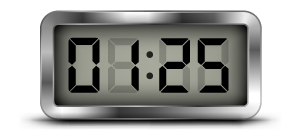
18 min. per TBS
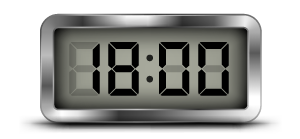
25 min. per WC
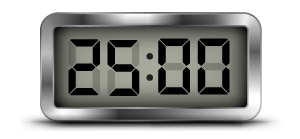
The final three testlets presented in AUD, FAR, and REG will contain eight TBSs total: two in Testlet #3 and three each in Testlets #4 and #5.
BEC will have four TBSs in two testlets, then a final testlet of three WCs. We recommend spending about 18 minutes on each TBS. On BEC, budget 25 minutes for each of the WCs (20 minutes to answer, 5 minutes to review and perfect your response).
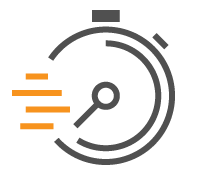 Focus on how much time you have, NOT the time on your watch.
Focus on how much time you have, NOT the time on your watch.
The exam screen will show hours:minutes remaining. Again, focus on how much time you have, NOT the time on your watch. Using the times in the Time Allocation table, you should begin each testlet with the following hours:minutes displayed on-screen.
Completion Times and Time Remaining |
||||
|---|---|---|---|---|
| AUD | BEC | FAR | REG | |
| Start | 4 hours 0 minutes | 4 hours 0 minutes | 4 hours 0 minutes | 4 hours 0 minutes |
| After Testlet 1 | 3 hours 15 minutes | 3 hours 22 minutes | 3 hours 19 minutes | 3 hours 13 minutes |
| After Testlet 2 | 2 hours 30 minutes | 2 hours 44 minutes | 2 hours 38 minutes | 2 hours 26 minutes |
| After Testlet 3 | 1 hours 54 minutes | 2 hours 8 minutes | 2 hours 2 minutes | 1 hours 50 minutes |
| After Testlet 4 | 1 hours 0 minutes | 1 hours 31 minutes | 1 hours 8 minutes | 0 hours 56 minutes |
| After Testlet 5 | 0 hours 6 minutes | 0 hours 17 minutes | 0 hours 14 minutes | 0 hours 2 minutes |
You’ll get a note board at the exam center. One of the first things you should do is write down the times to help you stay organized.
Remember, the CPA Exam timer only counts down total time, so it’s up to you to stay organized and keep yourself on track. If you develop a shorthand for hours:minutes, it’ll be easier to write down the times before you start. You can refer to your chart to see how much time to spend on each testlet. As you work through the testlets, you can monitor your speed and adjust as needed.
Sample Schedule To Write On Your CPA Exam Note Board |
||||
|---|---|---|---|---|
| AUD | BEC | FAR | REG | |
| Start | 4:00 | 4:00 | 4:00 | 4:00 |
| After Testlet 1 | 4:00 | 4:00 | 4:00 | 4:00 |
| After Testlet 2 | 4:00 | 4:00 | 4:00 | 4:00 |
| After Testlet 3 | 4:00 | 4:00 | 4:00 | 4:00 |
| After Testlet 4 | 4:00 | 4:00 | 4:00 | 4:00 |
| After Testlet 5 | 4:00 | 4:00 | 4:00 | 4:00 |
The only help you will receive with timing during your actual exam is a countdown of the hours and minutes remaining.
When there are less than two minutes left in an exam section, the exam clock will begin to include the seconds. By this point, you should be doing your final review. Each of the testlets on the exam is independent, and there are no time limits on individual testlets. So you’ve got to budget your time effectively to complete all five testlets within the four hours allotted.
Make sure to practice time management strategies as you prepare for the CPA Exam, too.
Applying your CPA Exam time management system during your studies is as important as answering practice exam questions. This will let you get comfortable with the CPA Exam time limits in advance. If you get in the habit of answering practice questions within these time constraints, you’ll be ahead of the game when you sit for the CPA Exam.
As we say here at Gleim, only perfect practice makes perfect!
The AICPA has been placing more emphasis on including pertinent information in the exhibits to assess candidates’ ability to analyze documents.

For $30 through Prometric, you can take a practice run at the site where you’ll take the CPA Exam. See more ways you can prepare for test day.
Often the first answer you think is right is the one you should choose.
Use all the tips here today whenever you practice. Read this advice frequently just before a practice or study session.
You’re going to need support, and it will be helpful to connect with others who understand what you’re going through. Sometimes you need help to see where you’re going wrong, to get motivated, and even to celebrate the small (or big) victories! Talk to others about what you’re going through. A mentor could be a great asset.
You’re going to need support, and it will be helpful to connect with others who understand what you’re going through. Your friends and family might not get why you’re unavailable. Prepare them so you can preserve relationships that might suffer otherwise. Remind them why you’re doing this and enlist their support in whatever ways you can. And don’t put the CPA Exam before those you care about when they really need you.
You might be tempted to power on when you’re feeling low. But taking some time to recharge can actually do you a lot of good. You’ll avoid burnout, stay focused, and study more productively. See how to schedule your CPA Exam study breaks.
These CPA Exam study tips and strategies will help you refine your study and get you well on your way to passing the CPA Exam.
Have questions or want more guidance? Reach out to a personal counselor at Gleim today.